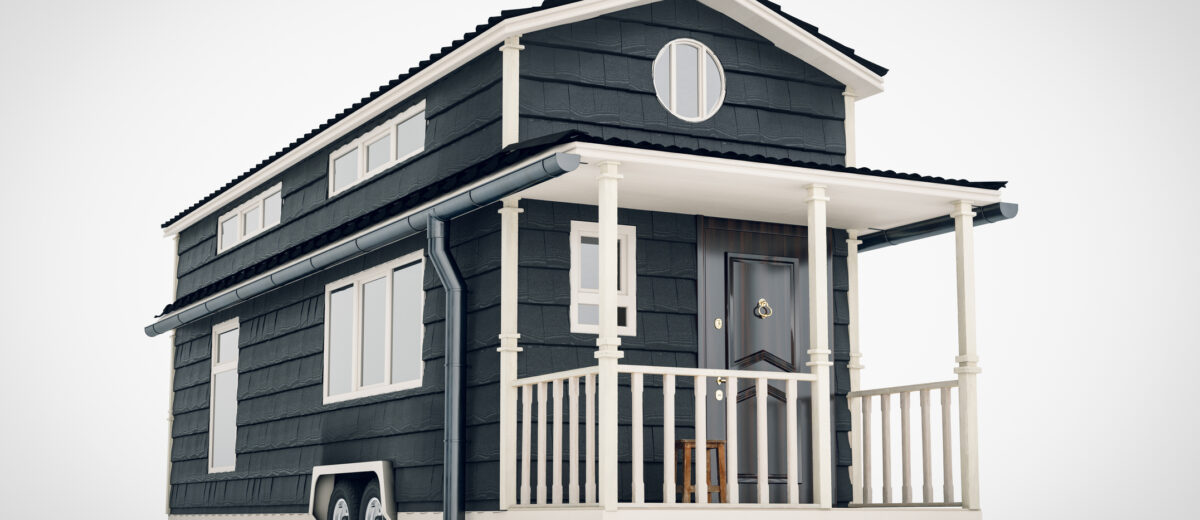Most towns and cities regulate the placement or construction of structures on your property to maintain orderly neighborhoods and safe construction to protect the citizenry.
Building Your Tiny Home
Up until very recently, the State of Maine required a home to contain a minimum of 500 square feet. The now popular tiny homes are typically smaller and even much smaller.
The Maine Uniform Building and Energy Code (MUBEC) now recognize tiny homes and in 2018 adopted the International Residential Code (IRC) Appendix V which defines what a tiny home is by code and provides for the minimum construction standards of a tiny home.
Requirements:
Tiny homes must have emergency egress windows in sleeping areas like traditional homes, ladders are allowed to access loft areas (whereas ladders would not be allowed under more conventional home building codes). Lowered ceiling heights and narrower stairways are also characteristics of tiny homes. All habitable rooms, other than kitchens, need to have at least 70 square feet of space and one room needs to have at least 120 square feet of space.
Tiny Homes & Zoning:
For the purposes of zoning, tiny homes are considered a dwelling unit. Many zoning and land use ordinances limit the number of dwelling units allowed within a certain size piece of land or upon any lot of land. For the purposes of subdivision regulations, the placement of three or more homes on any parcel may require an application for a subdivision.
Most zoning regulations and the MUBEC code require dwelling units, including tiny homes, to be placed upon a foundation, frost wall, or slab. This includes a mobile home, a tiny home, or a manufactured home. If the tiny home is brought to the site on wheels, the wheels and tow hitch need to be removed. Tiny homes on wheels are treated as a recreational vehicle or manufactured home (mobile home) and are given a certificate of title from the State of Maine.
Placement of your Tiny Home:
Keep in mind, not all municipalities allow tiny homes built on wheels to be placed on a property. Many towns and cities require tiny homes to be built on-site so inspections can take place as in a traditional home (inspections of plumbing, wiring behind the walls). We encourage you to check with your town or city code enforcement office on what is allowed in your town for tiny home construction.
If your property is within a planned neighborhood, an approved subdivision with a homeowner’s association, or a condominium, most likely the minimum size of the home or the type of construction is strictly regulated. This would be a covenant within the deed, on the face of the development plan, or within the homeowner’s association bylaws, so check these documents before considering a tiny home in these types of developments. Note that these private developments can legally discriminate against tiny homes.
Living in Your RV
Recreational vehicles are typically licensed and insured the same as an automobile. You drive them or tow them around and set up where you want and when you want. Some people own or buy land and want to set up a site to permanently place their RV.
Placement of an RV:
All towns regulate the placement of RV’s within the Shoreland Zoned areas of their particular town. The Shoreland Zone typically applies to all land within 250 feet of a lake, river, or ocean. Many towns and cities further regulate RV’s in all areas of the community and usually prohibit short-term or year-round living in an RV in more urban areas unless within a licensed campground.
If your property is within a planned neighborhood, an approved subdivision with a homeowner’s association, or a condominium, most likely recreational vehicles are either strictly regulated or completely prohibited within the development, even the storage thereof. This would be a covenant within the deed or within the homeowner’s association bylaws, so check these documents before considering the placement of a recreational vehicle in these types of developments. These private developments are allowed to legally discriminate against recreational vehicles, even if registered for over the road use.
Within the Shoreland Zone areas, there are requirements for minimum lot sizes, setbacks, clearing, and the number of days per year of use. Less than 120 days of use does require a permit from the code enforcement officer for the temporary placement of an RV on a private lot not licensed as a campground. The placement and use of a recreational vehicle for more than 120 days require the installation of a well and leach field in addition to a code enforcement officer permit for the use and motor vehicle registration.
To be considered an RV and not a structure, the RV must remain with its tires on the ground with a current vehicle registration from the Secretary of State division of motor vehicles.
Wherever you choose to live, in whatever way, always keep local ordinances and requirements in mind! Not sure where to go from here? Herrick & Salsbury can help you navigate the process. Contact us today.
